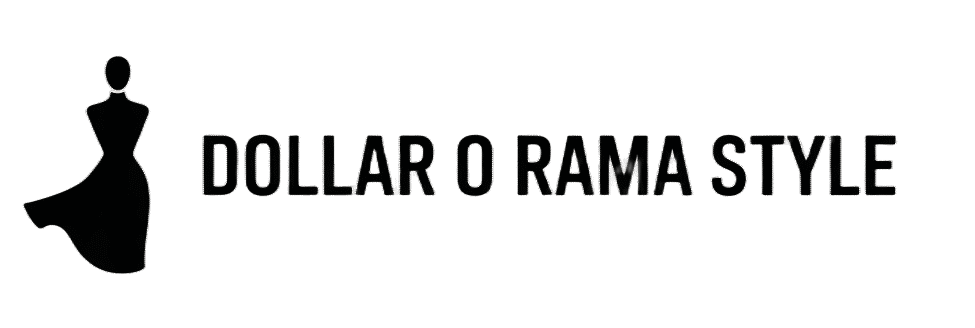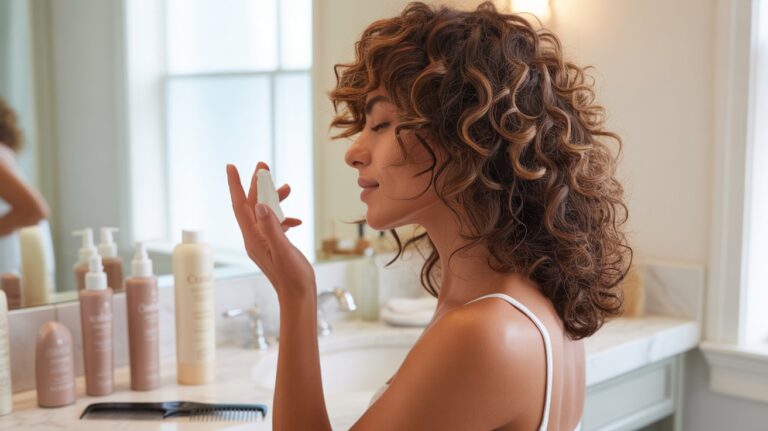The Ultimate Guide to Styling and Caring for Thick, Coarse Hair: From Frizz to Fabulous
Understanding Your Thick, Coarse Hair

Bottom Line Up Front: Thick, coarse hair is characterized by individual strands with a wide diameter (coarse) and high hair density (thick). This combination creates unique challenges and advantages that require specialized care approaches.
The Science Behind Coarse Hair
Coarse hair differs fundamentally from fine hair in its structure. Each coarse hair strand contains all three layers of the hair shaft: the medulla (innermost core), cortex (middle layer), and cuticle (outer protective layer). Fine hair typically lacks the medulla entirely.
Key Characteristics:
- Strand diameter: Thicker than sewing thread when rolled between fingers
- Strength: Most resilient hair type, can withstand higher heat
- Porosity: Often low porosity, making moisture penetration challenging
- Oil distribution: Natural scalp oils struggle to travel down the longer, thicker hair shaft, leading to dryness at the ends
Thick vs. Dense vs. Coarse: Clearing Up the Confusion
Many people use these terms interchangeably, but they describe different hair characteristics:
| Hair Characteristic | What It Means | How to Test |
|---|---|---|
| Coarse | Individual strand thickness | Roll single hair between fingers |
| Thick/Dense | Number of hair follicles per square inch | Measure ponytail circumference |
| Volume | How much space hair occupies | Visual assessment of fullness |
You can have any combination: coarse and thin density, fine and thick density, etc.
Interactive Hair Assessment Tool
Before diving into specific techniques, use our interactive tool to determine your exact hair characteristics and get personalized recommendations:
Hair Type Assessment
Discover your unique hair characteristics
The Complete Care Routine {#care-routine}

The Foundation: Weekly Washing Schedule
Thick, coarse hair should be shampooed only twice per week maximum. Over-washing strips the limited natural oils your hair desperately needs.
The Optimal Schedule:
- Sunday: Deep conditioning treatment
- Tuesday: Full wash day (shampoo + conditioner)
- Thursday: Co-wash or water rinse only
- Saturday: Light styling refresh
Step-by-Step Wash Day Routine
Step 1: Pre-Wash Preparation (5 minutes)
- Detangle with a wide-tooth comb or detangling brush
- Apply a pre-wash oil treatment to the mid-lengths and ends
- Focus on the most damaged areas
Step 2: Shampooing Technique (3-5 minutes)
- Use lukewarm water (not hot!) to preserve natural oils
- Apply shampoo only to the scalp and roots
- Massage with fingertips, not nails
- Let the shampoo rinse naturally clean the lengths
Step 3: Conditioning Protocol (10-15 minutes)
- Apply conditioner from mid-length to ends, avoiding roots
- Use a wide-tooth comb to distribute evenly
- Leave on for the full recommended time
- Rinse with cool water to seal the cuticle
Step 4: Post-Wash Care
- Gently squeeze out excess water with a microfiber towel
- Apply leave-in conditioner while hair is still damp
- Use heat protectant if you plan to style
Weekly Deep Conditioning
Coarse hair requires deep conditioning treatments at least every other week, but weekly is optimal.
DIY Deep Conditioning Recipe:
- 2 tablespoons coconut oil
- 1 tablespoon honey
- 1 ripe avocado
- 5 drops of your favorite essential oil
Mix ingredients, apply to damp hair, cover with a shower cap, and leave for 30-60 minutes.
Ingredients to Avoid (And Why) {#ingredients-avoid}
Understanding harmful ingredients is crucial for thick, coarse hair health. Here’s what to watch for and why:
Sulfates: The Silent Moisture Thieves
Sulfates like Sodium Lauryl Sulfate (SLS) and Sodium Laureth Sulfate (SLES) create that satisfying lather but strip your hair of essential oils and proteins.
Why They’re Particularly Harmful for Coarse Hair:
- Strip the limited natural oils faster than they can be replenished
- Cause increased frizz and flyaways
- Make hair feel “squeaky clean” but actually over-cleansed
- Can cause scalp irritation in sensitive individuals
Sulfates to Avoid:
- Sodium Lauryl Sulfate (SLS)
- Sodium Laureth Sulfate (SLES)
- Ammonium Lauryl Sulfate
- Ammonium Laureth Sulfate
Parabens: The Hormone Disruptors
Parabens are preservatives that extend shelf life but can cause scalp irritation, affect hormone balance, and potentially contribute to hair loss.
Common Parabens to Spot:
- Methylparaben
- Ethylparaben
- Propylparaben
- Butylparaben
- Isobutylparaben
Silicones: The Beauty Illusion
While silicones can make hair appear shiny temporarily, they create a coating that prevents moisture from penetrating the hair shaft and can clog scalp pores.
Problematic Silicones:
- Dimethicone
- Cyclopentasiloxane
- Amodimethicone (when used without proper cleansing)
Acceptable Silicones (Water-Soluble):
- PEG-modified silicones
- Silicones that wash out easily with gentle cleansing
Drying Alcohols
Certain alcohols can severely dry out already moisture-challenged coarse hair.
Avoid:
- Isopropyl alcohol
- SD alcohol
- Denatured alcohol
Safe Alcohols (Fatty Alcohols):
- Cetyl alcohol
- Stearyl alcohol
- Cetearyl alcohol
Best Products by Budget {#products}
Budget-Friendly Options (Under $15)
Shampoo:
- Suave Professionals Coconut Oil Infusion Shampoo – Sulfate-free, coconut oil for moisture
- Herbal Essences Bio:Renew Argan Oil Shampoo – Gentle cleansing with argan oil
Conditioner:
- TRESemmé Botanique Nourish & Replenish Conditioner – Rich formula with coconut milk
- Garnier Fructis Sleek & Shine Conditioner – Smoothing properties for frizz control
Leave-In Treatment:
- Cantu Shea Butter Leave-In Conditioning Repair Cream – Heavy moisture for very coarse hair
- It’s a 10 Miracle Leave-In Product – Multi-benefit formula
Mid-Range Options ($15-40)
Shampoo:
- Moroccanoil Moisture Repair Shampoo – Argan oil-infused, color-safe
- Olaplex No.4 Bond Maintenance Shampoo – Strengthening and repairing
Conditioner:
- Briogeo Don’t Despair, Repair! Deep Conditioning Mask – Weekly intensive treatment
- Living Proof Restore Conditioner – Helps reverse damage
Styling Products:
- Moroccanoil Treatment – Lightweight oil for shine and smoothness
- DevaCurl SuperCream Coconut Curl Styler – For defined, frizz-free styles
High-End/Professional ($40+)
Shampoo:
- Kérastase Nutritive Bain Satin – Luxury moisture for thick hair
- Shu Uemura Cleansing Oil Shampoo – Gentle oil-based cleansing
Conditioner:
- Oribe Gold Lust Repair & Restore Conditioner – Luxurious repair treatment
- Kérastase Masquintense for Thick Hair – Intensive weekly mask
Professional Treatments:
- K18 Peptide Prep Pro Chelating Hair Complex – Professional-grade damage reversal
- Olaplex No.3 Hair Perfector – At-home bond building treatment
Professional Styling Techniques {#styling}

Heat Styling Mastery
Temperature Guidelines for Coarse Hair:
- Blow drying: 250-300°F with ionic technology
- Flat ironing: 350-400°F (coarse hair can handle higher heat)
- Curling: 375-400°F for lasting results
Higher temperatures are necessary for coarse hair because the thick strands require more heat to alter their structure effectively.
The Professional Blowout Technique
Equipment Needed:
- High-wattage blow dryer (1800+ watts)
- Ceramic round brush (2-3 inch diameter)
- Heat protectant spray
- Smoothing serum
Step-by-Step:
- Section Preparation: Divide hair into 4-6 horizontal sections
- Product Application: Apply heat protectant and smoothing serum to each section
- Drying Technique: Start from the bottom section, wrapping hair around the brush
- Tension and Heat: Maintain gentle tension while directing airflow down the hair shaft
- Cool Shot: Finish each section with a blast of cool air to set the style
- Final Polish: Apply a small amount of hair oil to ends for shine
Curl Creation and Retention
The key to long-lasting curls in thick, coarse hair is the cooling process. After curling each section, pin it in place while it cools completely.
Professional Curling Method:
- Preparation: Use lighter conditioner on wash day before curling
- Heat Protection: Apply thermal protectant throughout hair
- Sectioning: Work in 1-2 inch sections for thorough heat penetration
- Curling: Hold each section on the iron for 8-12 seconds
- Setting: Pin each curl against your head while cooling
- Release and Style: After all curls have cooled, gently shake out and style
- Lock-In: Finish with strong-hold hairspray
Air-Drying Techniques for Natural Texture
The Plopping Method:
- Apply leave-in conditioner and curl cream to wet hair
- Lay a microfiber towel or cotton t-shirt flat
- Flip hair forward onto the center of the towel
- Wrap the towel around your head, securing at the nape
- Leave for 20-30 minutes before removing
Scrunching Technique:
- Use products designed for your hair texture
- Scrunch from ends upward, never downward
- Use a diffuser attachment on low heat and speed
- Don’t touch hair until completely dry
Cutting and Shaping Strategies {#cutting}

The Golden Rules of Cutting Thick, Coarse Hair
Layers, thinning, and texturizing are essential for thick hair to remove excess weight and bulk while creating movement.
Essential Cutting Techniques:
1. Long Layers
- Start layers at least 3-4 inches from the ends
- Graduated layers work better than blunt layers
- Ask for “weight line removal” to prevent the triangular shape
2. Texturizing
- Point cutting to soften blunt ends
- Razor cutting for natural movement (when done by experienced stylists)
- Thinning shears to reduce bulk without losing length
3. Face-Framing
- Soft, angled layers around the face
- Avoid harsh lines that emphasize hair thickness
- Side-swept bangs work better than blunt bangs
Haircuts That Work
For Long Hair:
- V-shaped layered cuts – Remove weight while maintaining length
- Long shag – Textured layers throughout for movement
- Graduated bob (A-line) – If you want shorter length
For Medium Hair:
- Lob with layers – Modern and manageable
- Shag with curtain bangs – Trendy and reduces bulk
- Asymmetrical bob – Edgy option that works with natural texture
For Short Hair:
- Pixie with texture – Surprising but can work well
- Short shag – Lots of layers and movement
- Asymmetrical bob – Chic and manageable
What to Avoid
❌ One-length cuts – Creates too much weight and bulk ❌ Blunt bobs – Emphasizes the triangular shape ❌ Razor cuts (unless by an expert) – Can cause frizz if done incorrectly ❌ Heavy bangs – Add more bulk to an already full appearance
Seasonal Care Adjustments {#seasonal}
Spring: Renewal and Growth
Focus: Repair winter damage and prepare for humidity
Adjustments:
- Increase deep conditioning treatments to weekly
- Introduce protein treatments if hair feels mushy
- Switch to lighter leave-in products as humidity rises
- Consider a fresh cut to remove winter damage
Product Swaps:
- Heavier creams → Lighter serums
- Occlusive oils → Humectant-based products
Summer: Humidity and Sun Protection
Focus: Frizz control and UV protection
Essential Changes:
- Add anti-humidity products to your routine
- Use UV-protecting hair products
- Increase water intake for internal hydration
- Protective styles become more important
Styling Adjustments:
- Embrace natural texture more often
- Use gel-based products for humidity resistance
- Protective styles: braids, buns, scarves
Fall: Preparation for Dryness
Focus: Building moisture reserves
Routine Changes:
- Gradually introduce richer products
- Increase oiling treatments
- Consider professional deep conditioning
- Evaluate and refresh your product arsenal
Winter: Maximum Moisture Mode
Focus: Combat indoor heating and cold air dryness
Intensive Care:
- Switch to cream-based leave-ins
- Add hair oils to your routine
- Use a humidifier in your bedroom
- Protective styling becomes crucial
- Consider co-washing more frequently
Product Upgrades:
- Light serums → Rich creams
- Regular conditioner → Deep conditioning masks
- Air drying → Gentle blow drying to prevent cold exposure
Troubleshooting Common Problems {#troubleshooting}
Problem: Frizz That Won’t Quit
Possible Causes:
- Over-washing or using harsh shampoos
- Insufficient moisture
- Damaged cuticles from heat or chemical processing
- Humidity exposure without proper protection
Solutions:
- Immediate Fix: Apply a small amount of hair oil or serum to damp hands, then gently smooth over hair
- Weekly Fix: Increase deep conditioning frequency
- Long-term Fix: Switch to sulfate-free products and add protein treatments
Problem: Styles Don’t Hold
Possible Causes:
- Hair is too clean (lack of natural oils for grip)
- Using wrong products for your hair texture
- Not using enough product
- Incorrect styling technique
Solutions:
- Product Adjustment: Use texturizing spray before styling
- Technique: Pin curls while cooling, use setting spray
- Timing: Style hair that’s 1-2 days post-wash for better hold
Problem: Hair Feels Heavy and Weighed Down
Possible Causes:
- Product buildup
- Using too many heavy products
- Need for a clarifying treatment
- Haircut needs updating
Solutions:
- Clarifying Treatment: Use a sulfate-free clarifying shampoo monthly
- Product Audit: Reduce number of styling products used
- Professional Help: Consider a cut to remove weight
Problem: Extreme Dryness at Ends
Possible Causes:
- Mechanical damage from brushing
- Heat damage
- Chemical processing damage
- Age of the hair (ends are oldest)
Solutions:
- Trim: Remove damaged ends
- Intensive Treatment: Weekly hair masks focusing on ends
- Protection: Always use heat protectant, sleep on silk pillowcases
- Gentle Handling: Detangle only when wet with conditioner
Problem: Scalp Issues with Thick Hair
Possible Causes:
- Inadequate cleansing due to hair density
- Product buildup at roots
- Insufficient scalp massage during washing
Solutions:
- Sectioning: Part hair into sections when shampooing
- Scalp Focus: Massage scalp thoroughly for 2-3 minutes
- Pre-wash: Use scalp scrubs or clarifying treatments
- Professional: Consider professional scalp treatments
Nutrition and Lifestyle Factors

The Reality About Hair Growth Supplements
Despite popular belief, biotin supplements have limited scientific evidence for improving hair in healthy individuals. The most evidence-supported supplements are Vitamin D, Iron, and Vitamin C.
Evidence-Based Supplements:
- Vitamin D: Deficiency linked to hair loss
- Iron: Essential for healthy hair growth, especially in women
- Vitamin C: Improves iron absorption and collagen production
Biotin Reality Check: Most healthy individuals get adequate biotin from their diet (35-70 mcg daily). Biotin supplements only help those with actual deficiencies, which are rare.
Hair-Healthy Foods to Prioritize
Protein Sources (for hair structure):
- Eggs (also contain biotin naturally)
- Lean meats and fish
- Legumes and beans
- Greek yogurt
Healthy Fats (for scalp health):
- Avocados
- Nuts and seeds
- Salmon and sardines
- Olive oil
Iron-Rich Foods (for hair growth):
- Spinach and leafy greens
- Lentils and chickpeas
- Lean red meat
- Fortified cereals
Lifestyle Factors That Impact Hair Health
Sleep Quality:
- Aim for 7-9 hours nightly
- Use silk or satin pillowcases to reduce friction
- Consider a silk hair wrap for extra protection
Stress Management:
- Chronic stress can affect hair growth cycles
- Practice stress-reduction techniques: meditation, yoga, exercise
- Consider professional help if stress is overwhelming
Research from Harvard Health Publishing shows that chronic stress can disrupt the hair growth cycle, leading to increased shedding and slower regrowth, making stress management crucial for optimal hair health.
Hydration:
- Aim for half your body weight in ounces of water daily
- Internal hydration supports overall hair health
- Herbal teas count toward fluid intake
Exercise:
- Improves circulation to the scalp
- Manage sweat and styling post-workout
- Use dry shampoo at roots if washing daily isn’t feasible
Age-Related Changes in Thick, Coarse Hair {#age-changes}
What Changes as You Age
Hormonal Shifts:
- Menopause can alter hair texture and growth patterns
- Thyroid changes affect hair quality
- Pregnancy and postpartum bring temporary changes
Structural Changes:
- Hair diameter may decrease slightly
- Gray hair often has a different texture (sometimes coarser)
- Natural oil production may decline
Adjusting Your Routine Through Life Stages
20s-30s: Foundation Building
- Establish good habits early
- Focus on damage prevention
- Experiment with styles and products
- Professional cuts every 8-12 weeks
40s-50s: Adaptation and Maintenance
- May need richer, more moisturizing products
- Consider professional treatments more frequently
- Adjust expectations as hormone levels change
- Focus on scalp health
60s+: Gentle Care Approach
- Prioritize gentleness over volume
- May need to wash less frequently
- Consider shorter, more manageable styles
- Focus on comfort and ease of styling
Gray Hair Considerations
Texture Changes:
- Gray hair is often more coarse and wiry
- May have increased porosity
- Can be more resistant to styling
Care Adjustments:
- May need purple shampoo to prevent yellowing
- Often requires more moisture
- Heat styling may need temperature adjustments
- Consider different cutting techniques for new texture
Professional vs. DIY: When to Invest {#professional}
When to Go Professional
Essential Professional Services:
- Color Treatments: Chemical processing requires expertise
- Initial Major Cut: Especially when changing styles dramatically
- Damage Assessment: Professional evaluation of hair health
- Specialized Treatments: Keratin treatments, chemical straightening
Professional Styling for Special Events:
- Weddings, formal events, photoshoots
- When you need guaranteed results
- Learning new techniques you can replicate at home
DIY-Friendly Tasks
Maintenance Between Appointments:
- Trimming split ends (with proper scissors)
- Deep conditioning treatments
- Daily styling and care
- Root touch-ups (if experienced)
Cost-Effective DIY Treatments:
- Hair masks and protein treatments
- Scalp massages and oil treatments
- Protective styling
- Regular maintenance trims (if you’re experienced)
Building Your Professional Team
Finding the Right Stylist:
- Look for experience with thick, coarse hair specifically
- Ask for before/after photos of similar hair types
- Read reviews mentioning hair texture
- Don’t be afraid to ask questions during consultation
Questions to Ask:
- “Have you worked with hair like mine before?”
- “What cutting techniques do you recommend?”
- “What products do you suggest for my hair type?”
- “How often should I come in for maintenance?”
Final Thoughts: Embracing Your Hair’s Natural Beauty
Thick, coarse hair is often seen as “difficult,” but with the right knowledge and techniques, it becomes your greatest asset. Your hair has natural volume and strength that many people spend hundreds of dollars trying to achieve. The key is working with your hair’s natural characteristics rather than fighting against them.
Key Takeaways:
- Moisture is everything – Prioritize hydrating products and treatments
- Less is often more – Reduce wash frequency and avoid harsh ingredients
- Professional cuts matter – Invest in a stylist who understands your hair type
- Patience pays off – Give new routines 4-6 weeks to show results
- Embrace your texture – Work with your natural patterns, not against them
Remember that great hair is a journey, not a destination. What works for someone else may not work for you, and that’s okay. Use this guide as your foundation, but don’t be afraid to experiment and adjust based on your unique needs.
Your thick, coarse hair is capable of looking absolutely stunning with the right care, patience, and techniques. It’s time to transform your relationship with your hair from frustration to celebration.
Quick Reference: Your Weekly Hair Care Checklist
Sunday: Deep conditioning treatment + scalp massage Monday: Protective styling, light refresh if needed Tuesday: Full wash day (shampoo + conditioner + leave-in) Wednesday: Style refresh, dry shampoo if needed Thursday: Co-wash or water rinse only Friday: Style for the weekend, apply hair oil to ends Saturday: Protective styling for sleep, silk pillowcase
Monthly: Clarifying treatment, professional trim (every 2-3 months), product rotation assessment
Seasonally: Routine adjustments, product switches, professional consultation







